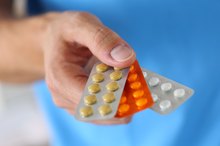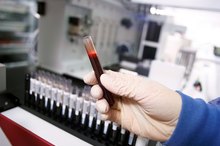Capillary Permeability and Inflammatory Response
Inflammation is the body’s response to injury or infection. The complex sequence of events that occurs when body tissues experience damage is known as the inflammatory response. Increased capillary permeability is one of the many processes that occurs during inflammation.
Capillary Permeability
Capillaries are small blood vessels responsible for the delivery of oxygen and nutrients to and the removal of wastes from the body’s tissues. Blood consists primarily of two components, cells and plasma. Plasma is the straw-colored liquid portion of the blood. Capillary permeability refers to the movement of blood plasma in and out of the capillaries.
Increased Permeability
Supplements to Help a Piercing Heal
Learn More
Normally, a balance exists between the amount of plasma entering the tissues from the capillaries and the amount re-entering the circulatory system from the tissues. When the tissue is damaged as a result of infection or injury, the lining of the small blood vessels becomes leaky, thereby increasing permeability. The balance shifts, allowing more fluid to enter the tissues.
Permeability Mediators
Permeability mediators are the chemicals that cause the capillaries to become leaky, or more permeable, when tissue is damaged. The chemicals histamine and serotonin play a significant role in increasing capillary permeability.
Increased Permeability Purpose
Cytokines & Diet
Learn More
When plasma enters damaged tissues during the inflammatory process, it carries a lot of substances with it. Clotting factors to stop the bleeding and spread of infection, antibodies to fight infection, nutrients to feed the tissue cells and proteins that attract phagocytes (cells responsible for attacking microorganisms and gobbling up the damaged cells) represent some of the substances carried by the plasma.
Inflammatory Response Symptoms
Inflammation is accompanied by four clinical symptoms, which include redness, heat, pain and swelling. Redness and heat are caused by increased blood flow to the damaged tissues. Pain is the result of nerve-ending stimulation by chemicals released during the inflammatory process. The accumulation of fluid in the tissue that results from increased capillary permeability produces swelling.
Related Articles
References
Resources
Writer Bio
Cynthia Ruscitto has been writing professionally since 2005. Her work has appeared on numerous health and anti-aging websites and blogs, such as WorldHealth, a site representing the American Academy of Anti-Aging Medicine. Ruscitto holds a Bachelor of Science in medical technology, and is a former clinical microbiologist and certified secondary education science teacher.








